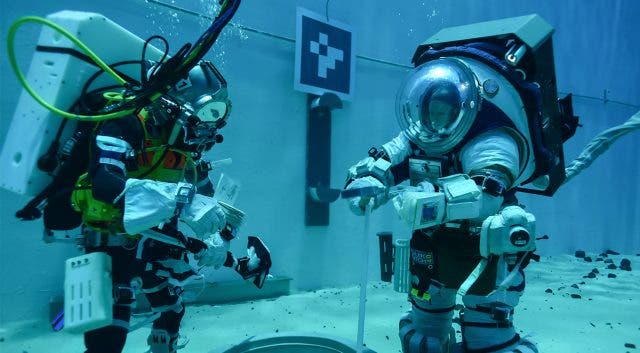NASA personnel are taking a bath for a good cause — they’re testing the agency’s new space suits.

The iconic white suits that put a man on the moon are a bit outdated, so NASA is hard at work tailoring the space suit of the modern age. However, launching people into orbit is expensive and, with untested suits, probably not a good idea. So NASA is testing its new wardrobe using an underwater laboratory.
A bath and the beyond
NASA’s old suits carry the fancy name Extravehicular Mobility Units (or EMUs, to the delight of every Australian out there), but they’re starting to show their age, design-wise. They were introduced over 40 years ago and, as such, they don’t readily lend themselves to being kitted out with the latest technology and gadgets. These suits will likely take astronauts back to the moon, maybe even to Mars.
In order to make sure they’re working as intended, researchers at the Johnson Space Center’s Neutral Buoyancy Lab (NBL) performed underwater tests using the xEMUs. This facility houses a massive basin that’s almost 10 times larger than an Olympic swimming pool, which is meant to simulate low-gravity environments. NASA says these underwater tests are essential because they can replicate the limited mobility of a real mission.
The suits were also tested in the “rock yard” at Johnson Space Center, an area boasting several types of simulated landscapes that one might find beyond Earth. This yard is generally used to test the capabilities of rovers and space suits in practical applications, to make sure they won’t break in the field. While we don’t have the exact results of the test just yet, NASA’s Aerospace Safety Council says the suits are performing as intended so far, and that their development is running according to schedule.
“Preliminary feedback from astronauts who have completed the test series evaluate the xEMU Demo architecture as acceptable to complete a demonstration mission on the ISS,” a NASA blog post explains.









